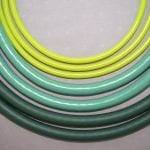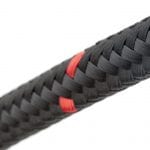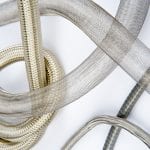Medical robotics are revolutionizing healthcare.
Surgical robotics helps surgeons perform procedures with greater precision or from remote locations. Telepresence robots let medical specialists from around the world weigh in on a patient’s diagnosis and help hospital nurses check in on patients recovering at home. Pharmacy automation uses robots to mix sterile intravenous solutions and dispense pills in pharmacy settings. Biorobots simulate or emulate living biological organisms mechanically or chemically.
The advances in prosthetic and exoskeleton technology are especially remarkable; the newest generation of these devices can literally help the paralyzed to walk.
Short History of Prosthetics
 People have been using prostheses for centuries. Archaeologists found a wood and leather big toe prosthesis in a tomb near the ancient city of Thebes. Researchers have determined that this toe and the Greville Chester artificial toe on display in the British Museum, both dating from before 600 BCE, actually worked to help their owners walk. The artificial bronze and wood “Capua leg,” dating back to about 300 BCE, was discovered in a grave in Italy. Roman scholar Pliny the Elder (23-79 A.D.) wrote of a Roman general in the Second Punic War (218-210 B.C.) who had an iron fist capable of holding a shield to replace an amputated right arm, which allowed him to return to the battlefield. Prosthetics advanced very little beyond the hand hook and peg leg until the early 1500s. German mercenary Gotz von Berlichingen lost his right arm in the Battle of Landshut, so he had a pair of technologically advanced iron hands that he could control by moving a series of releases and springs with his left hand. Subsequent surgeons and inventors advanced the prosthetics fields by refining mechanisms and materials of the devices existing at the time to improve device fit, form and function.
People have been using prostheses for centuries. Archaeologists found a wood and leather big toe prosthesis in a tomb near the ancient city of Thebes. Researchers have determined that this toe and the Greville Chester artificial toe on display in the British Museum, both dating from before 600 BCE, actually worked to help their owners walk. The artificial bronze and wood “Capua leg,” dating back to about 300 BCE, was discovered in a grave in Italy. Roman scholar Pliny the Elder (23-79 A.D.) wrote of a Roman general in the Second Punic War (218-210 B.C.) who had an iron fist capable of holding a shield to replace an amputated right arm, which allowed him to return to the battlefield. Prosthetics advanced very little beyond the hand hook and peg leg until the early 1500s. German mercenary Gotz von Berlichingen lost his right arm in the Battle of Landshut, so he had a pair of technologically advanced iron hands that he could control by moving a series of releases and springs with his left hand. Subsequent surgeons and inventors advanced the prosthetics fields by refining mechanisms and materials of the devices existing at the time to improve device fit, form and function.
Today’s Medical Robots Provide Advanced Prosthetic and Exoskeleton Technology
Microprocessors, computer chips and robotics in today’s devices provide more than a passing similarity to and basic functionality of a body part – modern prostheses have a realistic appearance and can mimic the function of a natural limb more closely now than ever before. Perhaps the most impressive advances have been in robotic prosthesis and exoskeleton technologies.
Advances in exoskeleton technology
Today, there are two main uses for medical exoskeleton technology: for rehabilitation and as a mobility aid.
Rehabilitation robotics facilitates and supports movement of body parts. They are also helpful in rehabilitation, training and therapy. Exoskeletons improve rehabilitation exercises by recreating the same motion repeatedly thousands of times, which allow patients to perform more exercise repetitions in the same amount of time with higher consistency. The therapist then dials back the amount of assistance provided by the exoskeleton as the patient gains strength. Exoskeletons for rehabilitation are adjustable for each patient and ability, capable of executing the exact motion thousands of times, and log information for each patient.

Augmented exoskeletons, designed to be comfortable for all-day wear, now lets the paralyzed walk. Engineers from the Mihajlo Pupin Institute in Belgrade, Yugoslavia, created the first working medical exoskeletons in the 1960s and 1970s. The earliest model, the kinematic walker, featured a single hydraulic actuator for driving a kinematic ally coupled hip and knee.
Exoskeletons have come a long way in the years since. In October of 2016, people with disabilities recently used exoskeleton technologies to turn themselves into cyborg athletes, competing in six events during the world’s first Cybathlon. In a sold-out stadium in Zurich, Switzerland, paraplegics used powered prosthetic arms and legs, and they raced in robotic exoskeletons, bikes, and motorized wheelchairs to perform feats they could never accomplish on their own. The advanced prosthetic and exoskeleton technologies allowed these paraplegic athletes to stand up from a chair then sit back down, go up a ramp and move through a doorway, navigate a slalom course, walk over steppingstones, and climb up and down stairs.
Robotic exoskeletons are essentially a pair of powered robotic legs. Users place their feet on footplates and secure their legs, hips and torsos with straps. The exoskeleton transfers the wearer’s weight to the ground. The wearer uses two arm braces to avoid falling over.
The exoskeleton provides a slow but surprisingly natural gait, one that mimics human locomotion rather well. When the wearer shifts his or her weight to the left, the robotics on the right leg takes a step forward. The wearer then shifts her weight to the right to trigger a step from the left leg.
Advanced materials make exoskeletons lighter than ever, yet strong enough to support wearers of all sizes. The newest in variable assist software allows therapists to adjust the amount of power delivered to the exoskeleton to best facilitate the strength of the user’s muscles.
Advances in robotic prosthesis
In December of 2016, Cornell University introduced a new soft robot hand capable of sensing strain by using stretchable optical waveguides as curvature, elongation and force sensors. As the study’s final demonstration, the fiber-reinforced soft prosthetic hand could feel the shape and softness of three tomatoes then select the ripe one.
The revolution in robotic prosthesis and exoskeleton technologies are the result of advances in materials that make the devices stronger, manufacturing methods that make them more realistic, and the introduction of electronics that make them smarter.
Some prosthetics rely on cables to move the prosthetic limb. Myoelectric limbs are modern prostheses that contain electronics that convert the user’s muscle movements into electric signals that control the prosthetic limb. Cable control provides immediate and physical movement of the prosthetic, while myoelectric limbs can lag. Advanced cable wire technologies expand uses and are sturdy enough to withstand years of use.
Bluetooth technology is changing the prosthetics industry by connecting devices to control the rhythm of walking, cadence and stride while modulating pressure and speed of multiple assistive devices. Fitting each prosthetic leg with a Bluetooth device can help a double amputee walk better.
Advances in technology also allows for the alteration of prosthetics and exoskeletons to fit each patient’s body and particular needs. Computer aided design allows manufacturers to create products that work as well for young soldier athletes as they do for frail seniors recovering from a stroke. It’s an exciting and revolutionary time in medical robotics!
Do you have a medical robotic application that requires custom cable? With years of experience customizing designs for medical, robotic, and automation technologies, our team of design experts is eager to help with your vision and objectives as well as your frustrations and challenges.We’re your custom solution partner – Contact Us today!
Custom Design

About Our Engineers
Innovative solutions start with an experienced team of engineers, armed with the latest design tools and technology. Our focus on understanding the individual, complex challenges of our customers and designing solutions that fit, is why we have been trusted as the industry leader for over 100 years.


















